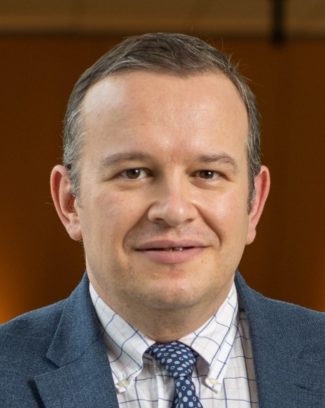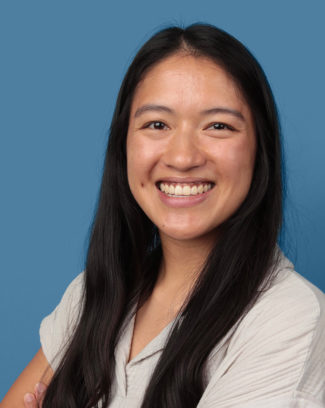Keynote Presentations
High-Performance Simulation of Matter and Materials
Elisa Molinari (Unimore and CNR-Nano in Modena, Italy)
Materials research and discovery through high-performance simulation is boosting key advances in understanding fundamental phenomena of matter and designing sustainable technologies of the future throughout all application fields: from energy harvesting and storage to manufacturing, to the whole landscape of information technologies. The fast rise of data-driven research increasingly leverages some major advancements of first principles codes combined with the evolution of HPC architectures and ecosystem. This plenary will discuss some success cases and current challenges of this field from the perspective of the MaX European Centre of Excellence and its open-source community codes, workflows and platforms (https://max-centre.eu/software).
Elisa Molinari is Professor of Physics at Unimore and CNR-Nano in Modena, Italy, and Director of the MaX European Centre of Excellence on “Materials Design at the Exascale” (https://max-centre.eu). Her main research interests are in theoretical and computational condensed matter science. She has been particularly active in the theory of fundamental properties of low-dimensional structures, in the simulation of advanced nano-bio systems and devices, and in the advancement of related computational methods. She has led or participated in scientific boards within the European HPC ecosystem including the EuroHPC JU and major international scientific institutions. More info at https://www.nano.cnr.it/researcher-profile/elisa-molinari/
Keynote Lecture PASC25 Conference
Fulfilling the Promise of the World’s First Exascale Supercomputer: Science on Frontier
Bronson Messer (Oak Ridge National Laboratory)
The world’s first exascale supercomputer, Frontier, has been in full production for over one year at Oak Ridge National Laboratory. The talk will present some of the features of Frontier’s architecture that make it especially useful for many types of scientific computing, from its pure computing speed to its memory capacity. Some further details of Frontier’s architecture will be discussed, including the new AMD GPUs that provide the bulk of the computational power. Finally, there will be a showcase of some of the most impactful scientific results that have been enabled via the advanced capabilities of Frontier.
Bronson Messer is a Distinguished Staff Scientist and the Director of Science of the Oak Ridge Leadership Computing Facility (OLCF) at the Oak Ridge National Laboratory. He is also a Joint Faculty Professor in the Department of Physics & Astronomy at the University of Tennessee. His primary research interests are related to the explosion mechanisms and phenomenology of supernovae, especially neutrino transport and signatures. He has also worked on machine learning applied to galaxy merger simulations and on performance modeling for HPC architectures. Messer recently served on the American Physical Society’s Committee on Informing the Public (2018-2020) and in 2020 he was awarded the Secretary of Energy’s Honor Award for his part in enabling the COVID-19 High-Performance Computing Consortium.
PASC25 PUBLIC LECTURE
This event is free of charge and open to the general public. The lecture is given in English.
Machine Learning Assessment of Coronary Artery Disease Using X-Ray Angiography
Alberto Figueroa (University of Michigan)
Coronary artery disease (CAD) and coronary microvascular dysfunction (CMD) diagnosis relies on different tests. Percutaneous approaches have made it possible to assess epicardial and microcirculation disease states in a single procedure, although this approach is rarely utilized due to its invasiveness and complexity. Conversely, there are over 4 million cardiac catheterization procedures performed yearly in the USA and Europe alone, making it one of the most used diagnostic procedures, although with a recognized low diagnostic yield.
Given the high number of catheterization procedures and its low diagnostic yield, there is a pressing need to develop methods to extract diagnostic information for both CAD and CMD from coronary angiography data. Our group has developed a data-driven computational models and machine learning tools for anatomical and functional characterization of CAD and CMD using angiography. In this work, we provide an overview of these tools and several applications.
Dr. Figueroa received his PhD in Mechanical Engineering from Stanford University, where he developed fluid-structure interaction methods for blood flow analysis. He was Sr Lecturer in the Division of Biomedical Engineering and Imaging Sciences at King’s College London. Dr. Figueroa is currently the Edward B. Diethrich M.D. Professor of Biomedical Engineering and Vascular Surgery at the University of Michigan.
Dr. Figueroa’s laboratory develops tools for modeling of blood flow which combine imaging, machine learning, and computational methods of fluid and solid mechanics. His group develops the modeling software CRIMSON and is co-founder of AngioInsight, Inc. a company which develops AI tools for assessment of coronary artery disease using x-ray angiography.
PASC25 Best Paper
Toward More Usable, Reproducible, and Sustainable Scientific Software: The Impact of User-Centered Design in Research Software Development
Katherine Arneson (University of Illinois Urbana-Champaign)
Integrating user-centered approaches and methodologies is essential for advancing usability, reproducibility, and sustainability in scientific software. Scientific tools often prioritize technical functionality, however, creating barriers to adoption and workflow integration, especially in interdisciplinary collaborations where research and software development teams may not share the same technical background as domain scientists and end users. At the National Center for Supercomputing Applications at the University of Illinois Urbana-Champaign, and specifically as a part of the Molecule Maker Lab Institute, we address these challenges by embedding user-centered design into the development of chemistry-focused, open-source software. Through case studies from the AlphaSynthesis suite, we demonstrate how methodologies such as user discovery sessions, iterative design, and usability testing can be used to address domain scientist needs and workflows. Consistent design systems and interaction patterns enhance reproducibility, allowing scientists to replicate results and workflows effectively, while scalable components and community engagement strategies promote sustainability and long-term adaptability within the research ecosystem. This paper highlights the role of user-centered design in bridging the gap between computer science and domain science, advocating for its broader adoption within the research software development space to create impactful, enduring tools for interdisciplinary collaboration and innovation.
Kate Arneson is a research user interface and experience (UIX) designer at the National Center for Supercomputing Applications (NCSA) at the University of Illinois Urbana-Champaign. Her work focuses on applying human-centered design to research software projects, with applications ranging from chemistry and machine learning to genomics and healthcare. At NCSA and the Molecule Maker Lab Institute, Kate collaborates closely with scientists, engineers, and end-users to create usable, reproducible, and sustainable applications, advancing the role of design in interdisciplinary research.





